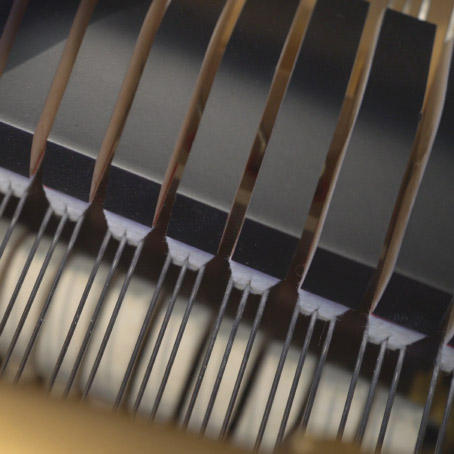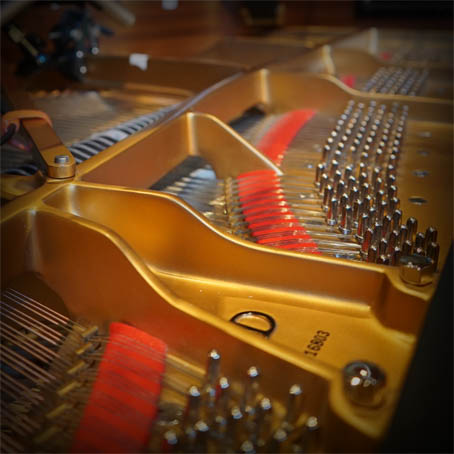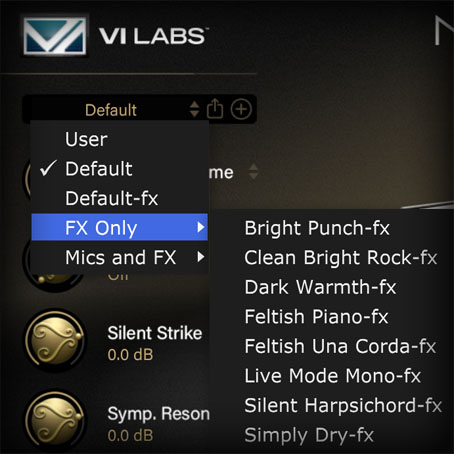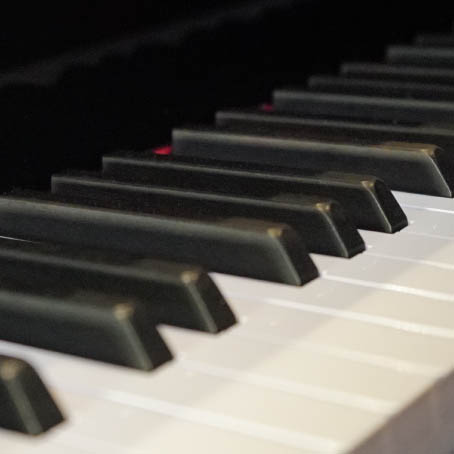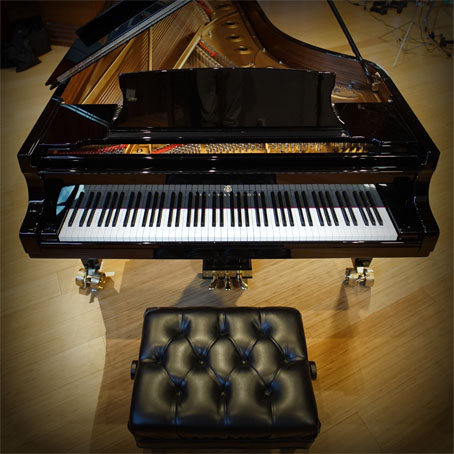The Modern D is our impeccable simulation of the world's most well-known concert grand. Sampled from a 2021 New York Steinway© Model D, chosen for its exquisite tone and immense power, the Modern D is our most ambitious and largest piano sample library ever. The library contains 34,615 pristine samples in five stereo microphone setups, all controlled from a beautiful, easy-to-use interface. Our new Natural Response method recreates the full dynamic range of each key within each mic, so every touch input generates the true and accurate response of the real piano. Many notes have over 50db of dynamic range and some sustains can last well over two minutes. This is the ultimate studio concert grand simulator, at your fingertips.
As always with VI Labs, 100% of the sound is sampled from the real piano, nothing is synthesized or faked at all. Legendary microphones like the M49 and 4006 were chosen to capture everything, including 2,500 release trails per mic, multi-layered sympathetic resonances, fully sampled Una Corda with its own release samples, plus sampled Muted Strikes, Half Pedal, Silent Strikes, along with Pedal and Key noises. With its massive range in both timbre and volume, this piano can do it all. Whether it's bright, mellow, or anywhere in between is entirely dependent on how it is played. Everything you want from the softest yet detailed pianissimos, up to the most aggressive growling fortissimos, the Modern D delivers. This truly is the pianist's virtual piano.
|
34,615 samples composing 118GB wave data in a tidy 18GB file. Massive library, small footprint thanks to lossless compression and complex scripting. This also means fast loading and efficient CPU usage.
Five stereo phase-aligned menu-based microphones with interactive mic display. World class mics and gear with diverse perspectives cover every way of recording a concert grand all around, close and far. Real deeply sampled resonance for both pedal down and sympathetic resonance types. Powerful scripting recreates real pedal resonance behavior adding complex depth and sustain to the tone, all fully adjustable. |
Complete control of up to 4 pedals including sampled Una Corda. Repedal and adjustable Half pedal features included. Sostenuto, Una Corda, plus Muted Strikes all MIDI CC controllable make for a highly expressive piano.
New MIDI panel with unique split controls for both timbre and volume. High resolution discrete tables and controls allow custom curves for any response imaginable. Many presets included, or create your own. 2,500 release samples per mic including staccato releases that respond to the quickest playing, no articulations needed. Release samples capture the resonant ring of the Model D concert grand and are crucial for realism. |
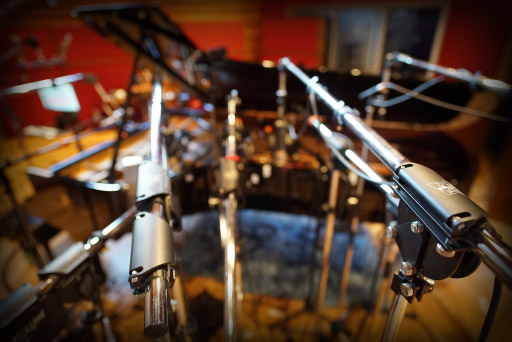
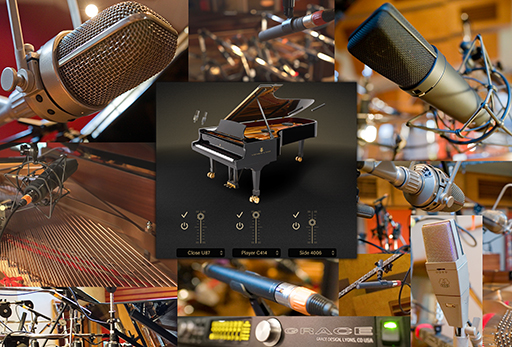
From a whopping 39 individual mics recorded, we chose the best five stereo pairs from the session that fully capture this piano from several traditional perspectives, close to far, more or less hammer presence, all with a clean high end tone. Legendary mics like the U87 and M49, C414 and 4006 were chosen not only for their luxurious sound but for how perfectly they captured this piano with so much detail. The sound of a big grand varies considerably based on where mics are placed. These five stereo pairs were favored for their diversity in character and their placements, the balance of direct vs. room, and how how nicely they mix together.
When recording acoustic piano in the studio, there can be many options. Different mics and placements all offer various perspectives and character, never limited to one basic tone. Our mics are selected from the mixer menus, the interface shows each mic as set up on the real piano. Tones from close and intimate, wide and distant, with warmth or brilliance, all can be acheived with these mics. Load and mix the mics in any combination. Every mic is time-corrected and phase-aligned so even the distant Room mics have no extra delay; all mics respond and mix incredibly well in any combination.
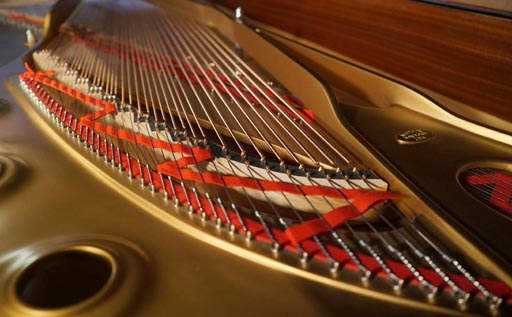
Pianists are well accustomed to the sympathetic resonances that develop in acoustic pianos and their importance to the sustain and how chords resolve. These resonances blend the individual strings together as one instrument. Sympathetic Resonance is created when harmonically related keys are held down while others are played, and Pedal Resonance occurs as all strings vibrate together when notes are played while the sustain pedal is down. With the massive soundboard and long strings, the resonance effect is strong and adds body and bloom to the sustain.
Both pedal down and harmonic key pedal up resonances are sample-based and not synthesized in any way. We believe this important part of the piano's tone is best emulated only with samples from all mics. The Modern D features our new multi-layered resonance samples to deliver a complex evolving tone. Precisely sampled and scripted for both types of advanced resonance models, they respond naturally like the real thing. Resonance volume for both types is adjustable, and Sympathetic Resonance has its own polyphony setting.

One distinct advantage grands have over uprights is their soft, or Una Corda pedal, which shifts the entire action to the right so a hammer normally hitting three strings only hits two, etc. Plus the strings are struck by a part of the hammer that's voiced differently to create a softer muted tone. The Modern D includes a fully sample-based Una Corda with its own release samples for a softer attack and a stronger release trail compared to the normal sustain. This adds another layer of tonal color only available in grand pianos. It's really like having two sets of hammers in the same piano that you can switch in real time.
A premium grand piano library would not be complete without real Una Corda samples as classical and other demanding pianists use it not only to lower the volume of a soft passage but also to get the unique variation in tonal color. It's not an effect that's easily mimicked or modeled since the changes in tone come from physical factors of the real piano such as the different hammer voicing, the aliquot string effect of the non-struck string, as well as the special tone of the release trails due to the different vibrations in the strings.


